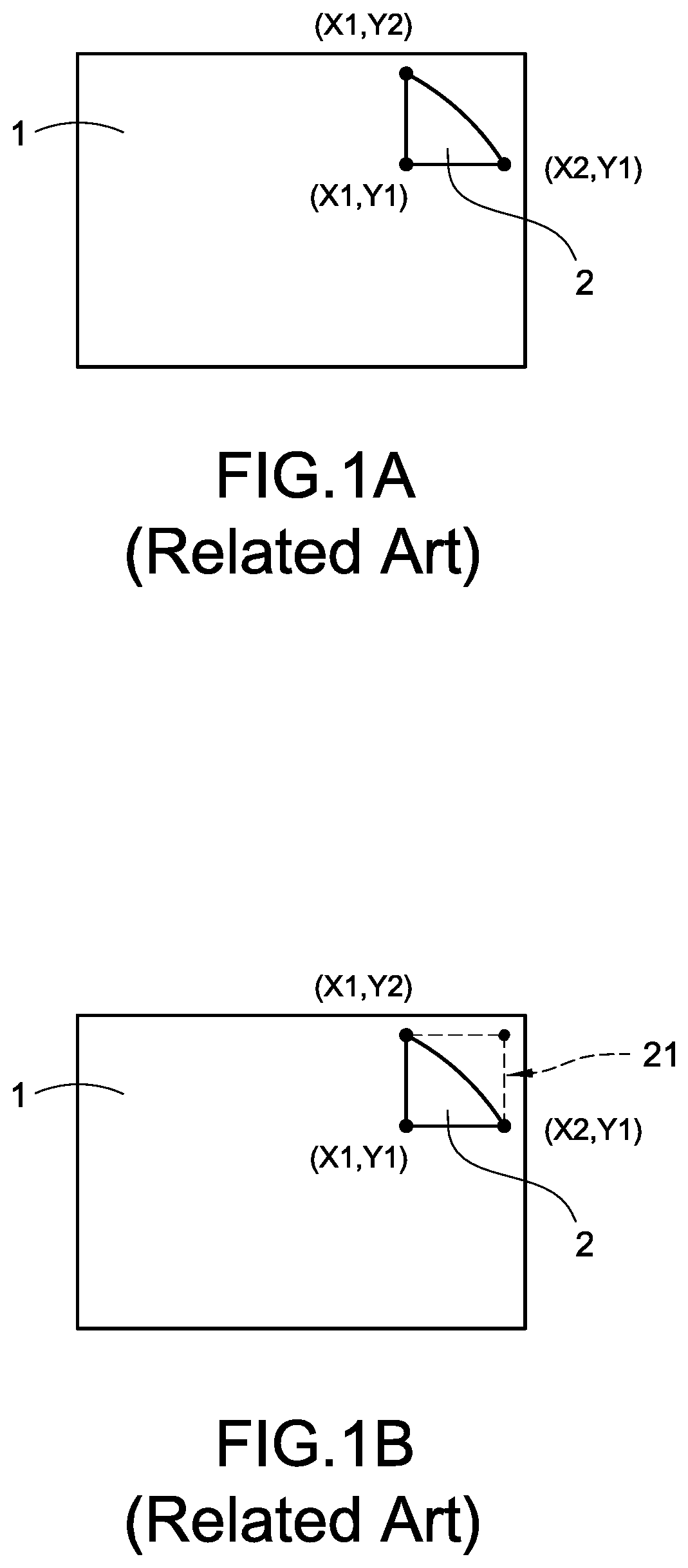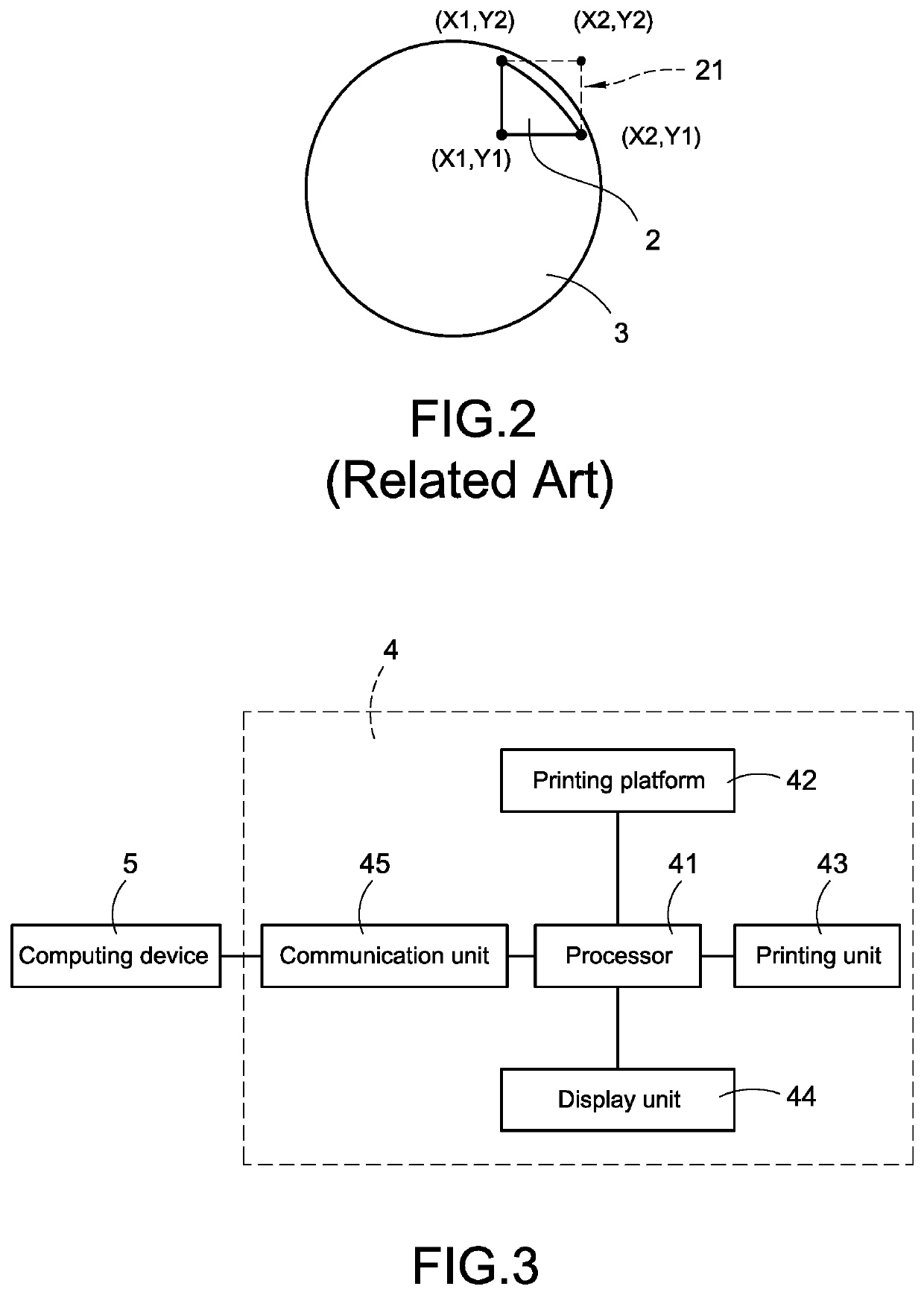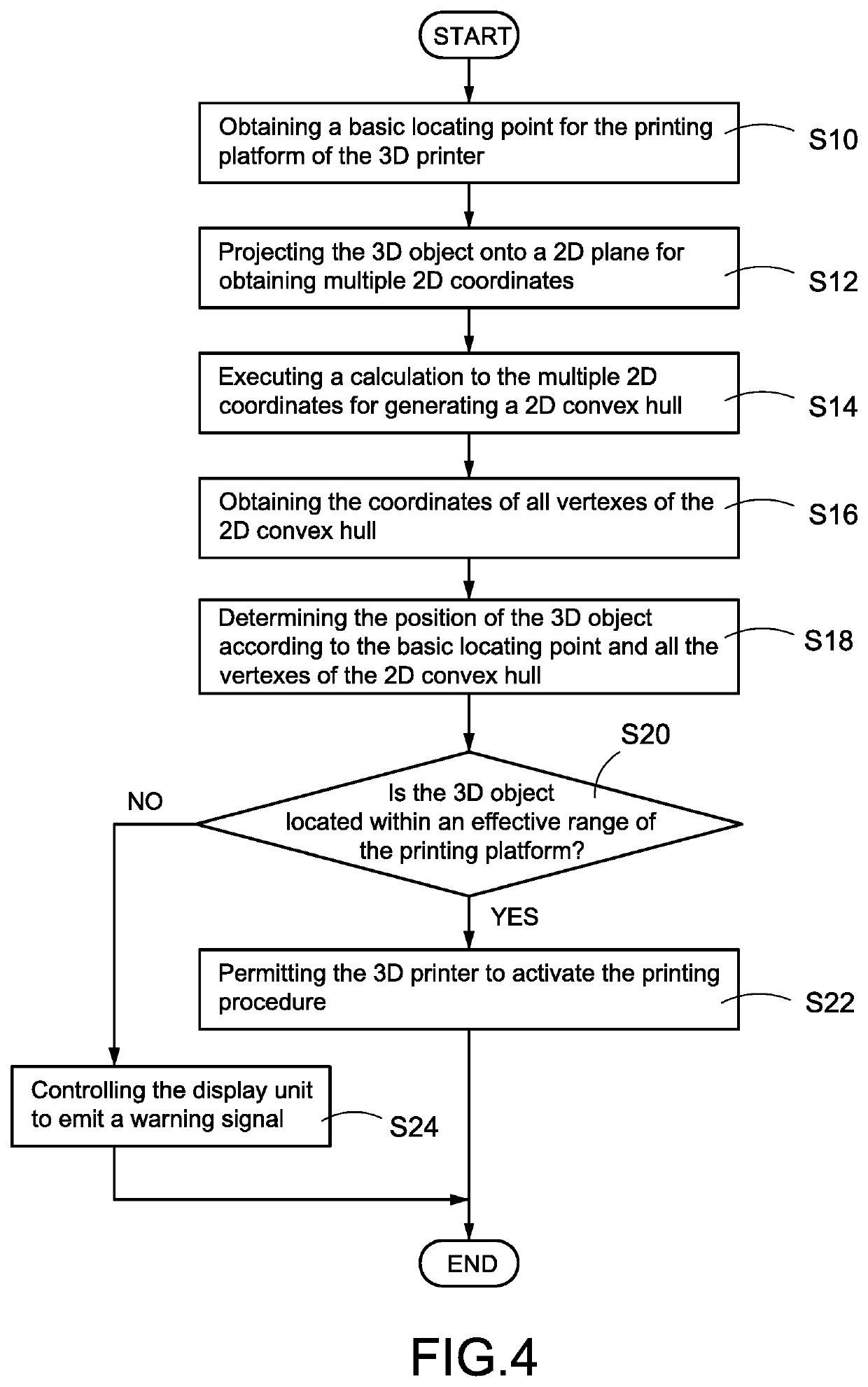Method for detecting object border of 3D printer
a 3d printer and object technology, applied in the field of 3d printers, can solve the problems of 3d printers of related art may misjudge about the 3d object and potential mistakes, and achieve the effect of quick and accurate detection of the position
- Summary
- Abstract
- Description
- Claims
- Application Information
AI Technical Summary
Benefits of technology
Problems solved by technology
Method used
Image
Examples
first embodiment
[0041]FIG. 5 is a schematic diagram showing an object border of the present invention. In the embodiment as shown in FIG. 5, the printing platform 42 is in a round shape.
[0042]As shown in FIG. 5, after the processor 41 projects a 3D object onto a 2D plane, a plurality of 2D coordinates can be obtained. The processor 41 may perform a calculation to these 2D coordinates for generating a 2D convex hull 60, wherein the 2D convex hull 60 is defined for indicating the border of the 3D object. Also, the processor 41 obtains all vertexes 601 of the 2D convex hull 60. In particular, these vertexes 601 are all obtained from the plurality of 2D coordinates of the 3D object. In a first embodiment, the processor 41 is to calculate a distance between each vertex 601 of the 2D convex hull 60 and a circle center 421 of the printing platform 42 respectively, and compares each distance with a radius of the printing platform 42 respectively, so as to determine whether the 3D object as a whole is withi...
second embodiment
[0048]After the step S32, the processor 41 calculates a distance between each of the vertexes 601 of the 2D convex hull 60 and the circle center 421 of the printing platform 42 respectively (step S34), and determines if any of the calculated distances is longer than the radius of the printing platform 42 (step S36). In this embodiment, the processor 41 will determine that the 3D object as a whole is not fully located within the effective range of the printing platform 42 if any one of the calculated distances is longer that the radius of the printing platform 42 (step S38). On the other hand, the processor 41 will determine that the 3D object as a whole is fully located within the effective range of the printing platform 42 if all of the calculated distances are equal to or shorter than the radius of the printing platform 42 (step S40). After the step S38 or the step S40, the processor 41 may further perform the step S20 in FIG. 4, so as to determine whether the 3D printer 4 is perm...
third embodiment
[0055]Please refers to FIG. 8 at the same time. FIG. 8 is a schematic diagram showing an object border of the present invention. In one embodiment, the processor 41 may generate multiple straight lines that are respectively passing through one of the vertexes 601 and the basic locating point 420, obtain respectively a maximum distance Lmax between the basic locating point 420 and an intersection point of the circle equation and each straight line, and determines whether each distance between each of the vertexes 601 and the basic locating point 420 is equal to or shorter than the corresponding maximum distance Lmax (step S58). As discussed above, the step S58 is only used to determine whether the vertexes 601 of the 2D convex hull 60 are belonging to the aforementioned exception, so in some scenarios the step S58 in FIG. 9 is not necessary to be executed.
[0056]If the determination at the step S56 is positive (if the step S58 exists, the determination at the step S58 should be also p...
PUM
| Property | Measurement | Unit |
|---|---|---|
| distances | aaaaa | aaaaa |
| radius | aaaaa | aaaaa |
| size | aaaaa | aaaaa |
Abstract
Description
Claims
Application Information
 Login to View More
Login to View More - R&D
- Intellectual Property
- Life Sciences
- Materials
- Tech Scout
- Unparalleled Data Quality
- Higher Quality Content
- 60% Fewer Hallucinations
Browse by: Latest US Patents, China's latest patents, Technical Efficacy Thesaurus, Application Domain, Technology Topic, Popular Technical Reports.
© 2025 PatSnap. All rights reserved.Legal|Privacy policy|Modern Slavery Act Transparency Statement|Sitemap|About US| Contact US: help@patsnap.com



